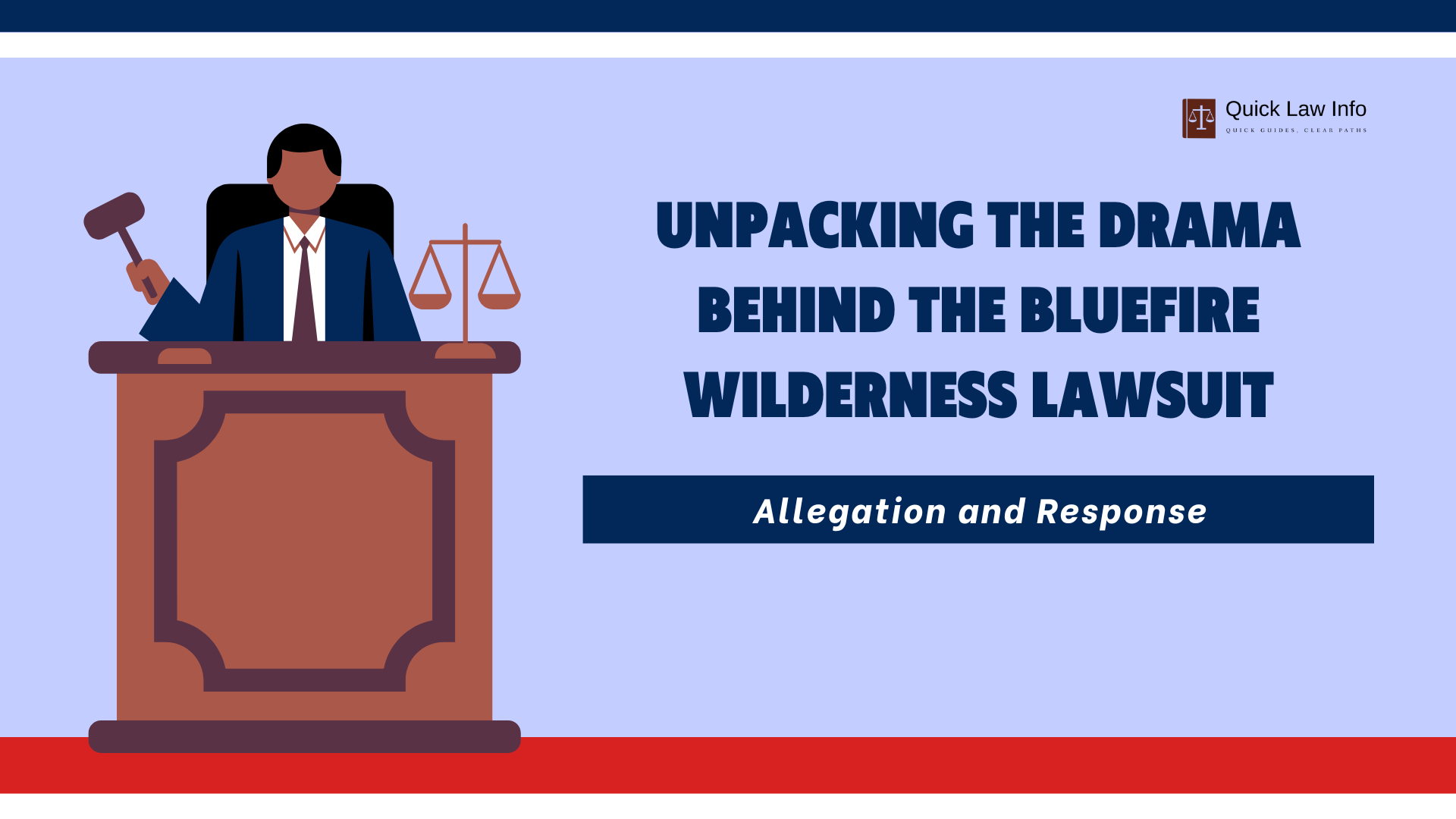Wilderness therapy programs have been gaining popularity in recent years as a treatment option for troubled youth. These programs offer a unique approach to therapy, using nature and outdoor activities as a means of helping young people overcome their challenges and develop important life skills.
However, as with any industry, there have been concerns and controversies surrounding some wilderness therapy programs. One such program is BlueFire Wilderness, which has recently been facing a lawsuit. In this blog post, we will take a closer look at the BlueFire Wilderness Therapy lawsuit and understand the controversy surrounding it.
What is BlueFire Wilderness?
BlueFire Wilderness is a wilderness therapy program located in Idaho. The program is designed for adolescents between the ages of 11 and 17 who are struggling with a variety of issues, such as substance abuse, behavioral problems, and mental health disorders. The program offers a combination of outdoor activities, individual and group therapy, and academic support to help participants work through their challenges and develop healthy coping mechanisms.
Background of the Lawsuit
The parents of a former student who attended the BlueFire Wilderness program in Idaho filed the lawsuit in 2020. They allege that their child was subjected to physical and emotional abuse, neglect, and other forms of mistreatment during their time at BlueFire Wilderness. The parents claim that their child was not provided with adequate medical care, proper nutrition, and a safe environment, which resulted in severe physical and psychological harm.
The Allegations Against BlueFire Wilderness
Several former staff members, students, and their families have made several allegations against BlueFire Wilderness, including claims of abuse, negligence, and misleading marketing. These claims have caused concern among parents and have raised questions about the safety and effectiveness of the program.
Lack of Proper Training and Oversight
One of the most concerning aspects of the BlueFire Wilderness Therapy lawsuit is the lack of proper training and oversight of staff members. The parents allege that BlueFire Wilderness staff were not adequately trained to handle students with mental health issues and were not equipped to deal with emergencies.
The lawsuit also claims that the program lacked proper supervision, which led to the mistreatment and neglect of students.
Impact on Students and Families
The effects of the alleged mistreatment at BlueFire Wilderness have had a significant impact on the student and their family. The parents claim that their child suffered physical injuries, including bruises, cuts, and weight loss, as a result of the mistreatment. They also state that their child’s mental health deteriorated, and they experienced anxiety, depression, and suicidal thoughts.
The family is seeking damages for the physical, emotional, and financial toll that the program has taken on them.
Related Articles
Unpacking the C.W. Park USC Lawsuit Drama
Paul Mackoul MD Slapped With Lawsuit – Controversy Explained
Response from BlueFire Wilderness
BlueFire Wilderness has denied all allegations made in the lawsuit and released a statement expressing their commitment to the safety and well-being of their students. They also claim that they have an excellent safety record and that the Outdoor Behavioral Healthcare Council (OBH) has accredited them. They also claim to have conducted an internal investigation and found no evidence to support the allegations.
BlueFire Wilderness also stated that they cooperated with law enforcement and cleared themselves of any wrongdoing. They have also stated that they will vigorously defend themselves against the lawsuit.
Impact on the Reputation of BlueFire Wilderness
The lawsuit has undoubtedly caused damage to the reputation of BlueFire Wilderness. As a program that prides itself on providing a safe and therapeutic environment for troubled teens, these allegations go against their core values. The lawsuit has also raised questions about the effectiveness of their screening and training processes for staff members.
However, it is important to note that this is an ongoing legal case and the allegations have not been proven in court. It is also crucial to remember that one incident does not define the entire program. BlueFire Wilderness has been in operation since 2013 and has helped numerous students. It is possible that this could be an isolated incident.
Implications for the Wilderness Therapy Industry
The BlueFire Wilderness lawsuit raises concerns about the safety and effectiveness of wilderness therapy programs. It highlights the need for proper training and oversight of staff members and the importance of transparent communication with families. The lawsuit has also sparked a conversation about the need to address the lack of regulations and standards in the wilderness therapy industry to ensure the safety and well-being of students.
What Can Be Done?
In light of the BlueFire Wilderness lawsuit and other controversies surrounding wilderness therapy programs, it is clear that there is a need for stricter regulations and oversight in the industry. Families should thoroughly research and vet any program before enrolling their child. This includes looking into the program’s safety protocols, staff training, and accreditation status.
People have additionally called for putting federal regulations in place for wilderness therapy programs. This would ensure that all programs adhere to the same safety and quality standards and give families the peace of mind that their child is in a safe and reputable program.
Final Thought
The BlueFire Wilderness lawsuit sheds light on the dark side of the wilderness therapy industry and the potential harm it can cause to vulnerable students. It serves as a reminder for parents to thoroughly research and carefully consider all aspects before enrolling their child in a wilderness therapy program. It also calls for a closer look at the practices and regulations in the industry to prevent similar incidents from happening in the future.
